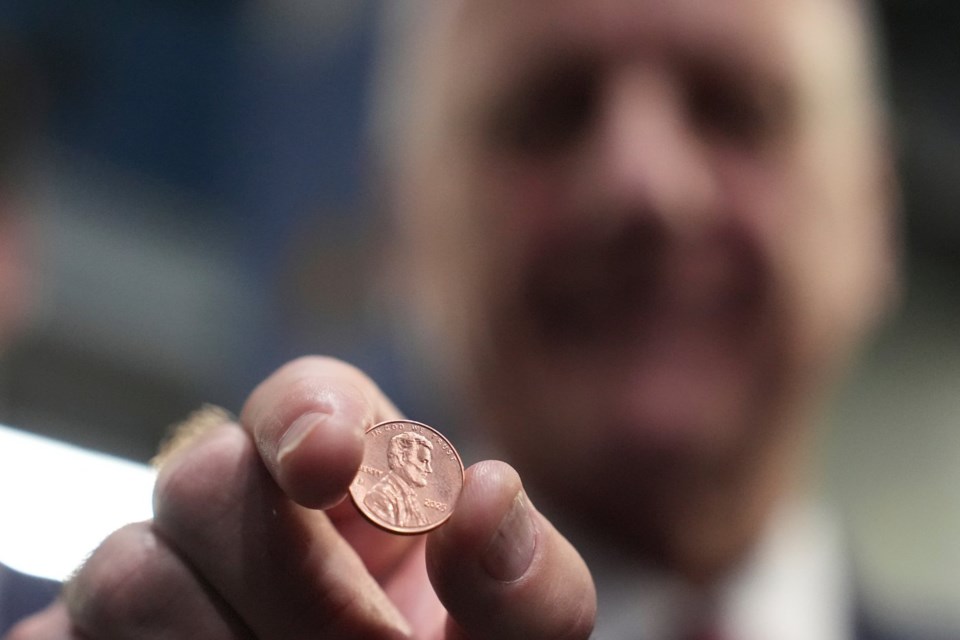The United States officially pressed its final penny on Wednesday, ending production of the 1-cent coin after more than two centuries as an enduring symbol of thrift, luck and Americana — even as it became economically impractical to produce.
At the U.S. Mint in Philadelphia, Treasurer Brandon Beach watched as the last pennies rolled off the press, declaring, “God bless America, and we’re going to save the taxpayers $56 million,” before striking the ceremonial final coin. Those final pennies will now be auctioned off.
When the penny debuted in 1793, it could buy a biscuit, a candle or a piece of candy. Today, most end up forgotten in jars, drawers or car cup holders — and each costs nearly four cents to manufacture. Despite billions still in circulation, no new ones will be minted, though they remain legal tender. The last time the U.S. retired a coin was the half-cent in 1857.
Mint employees, fully aware this moment was coming, stood silently during the final run before breaking into applause. “It’s an emotional day,” said 15-year mint veteran Clayton Crotty. “But it’s not unexpected.”
President Donald Trump ordered the penny’s discontinuation earlier this year, decrying the cost of producing it. “For far too long the United States has minted pennies which literally cost us more than 2 cents,” he posted online. “This is so wasteful!”
Still, the phaseout has stirred nostalgia and confusion. Many Americans consider pennies lucky or collectible, and the abrupt end left retailers scrambling as supplies dwindled. Some rounded prices down to avoid shortchanging customers, while others pleaded for exact change or even offered small perks — like free drinks — in exchange for stacks of coins.
Jeff Lenard of the National Association of Convenience Stores said the organization has supported eliminating the penny for decades, but criticized the abrupt rollout: “This is not the way we wanted it to go.”
Canada ended its penny production in 2012, something U.S. reformers often pointed to when urging Congress to do the same. Yet the penny remained stubbornly embedded in U.S. culture — even though, paradoxically, it is cheaper to mint than the nickel, which costs nearly 14 cents per coin.
Collectors and historians say the loss is more than symbolic. Frank Holt, emeritus professor at the University of Houston, says coins provide a historical record: “They reflect our politics, our religion, our art, our sense of ourselves, our ideals, our aspirations.”
The retirement of the penny marks the end of one of the country’s most recognizable icons — and the start of a new era in American currency, where practicality finally outweighs sentiment.

